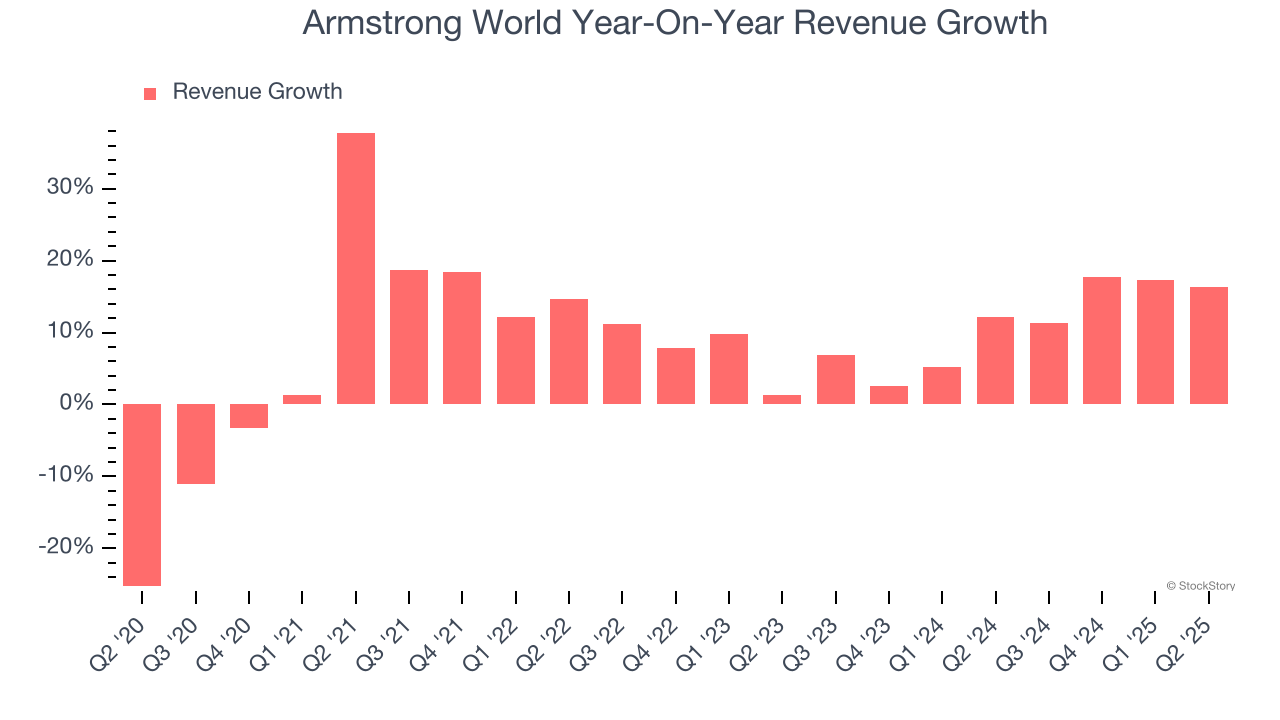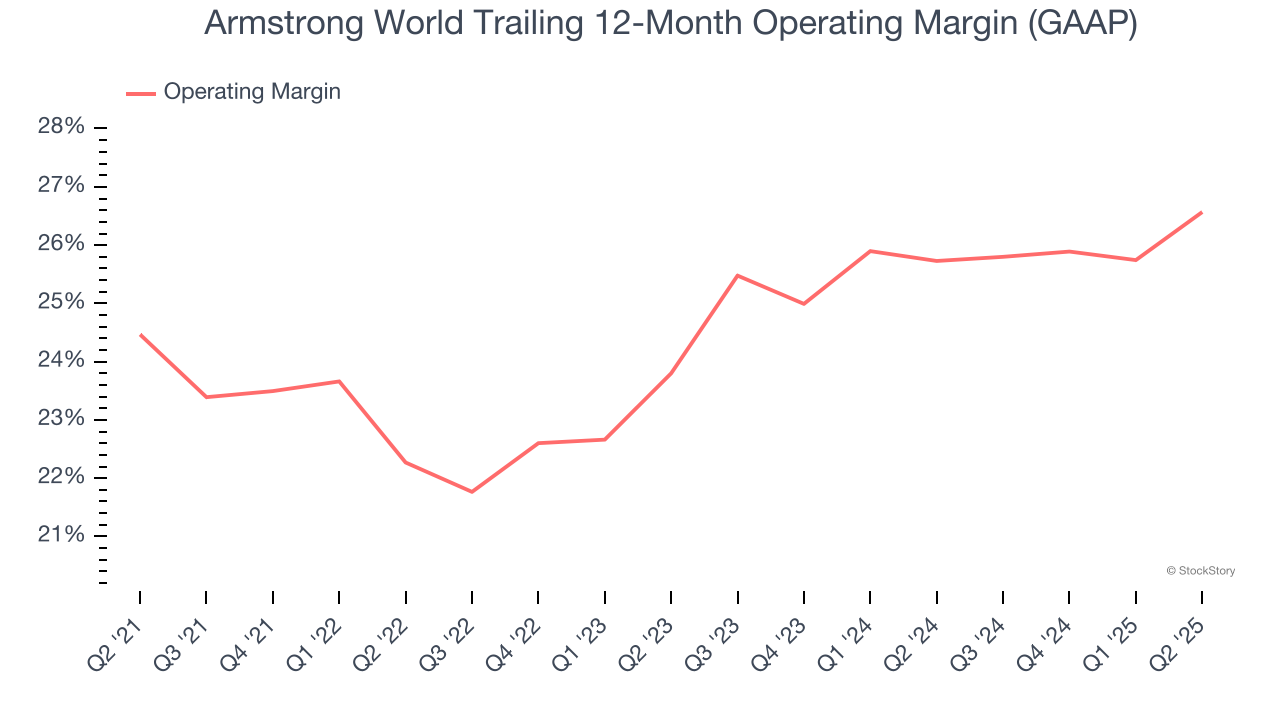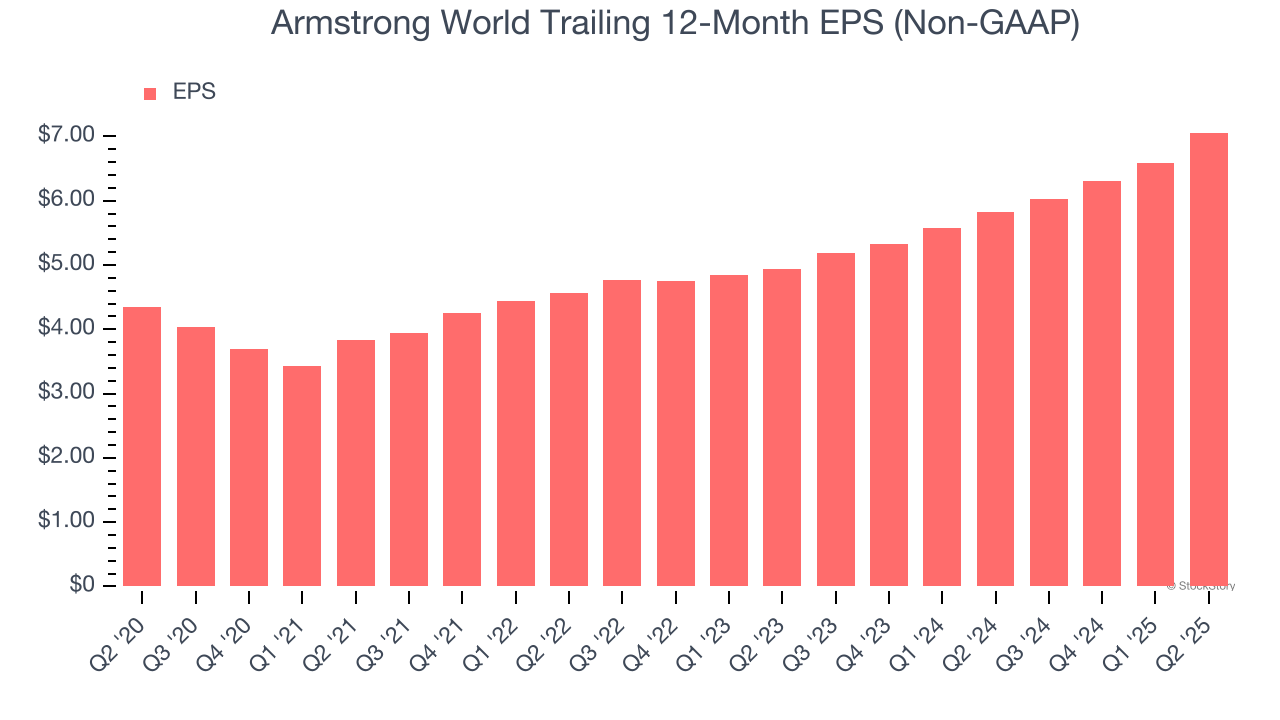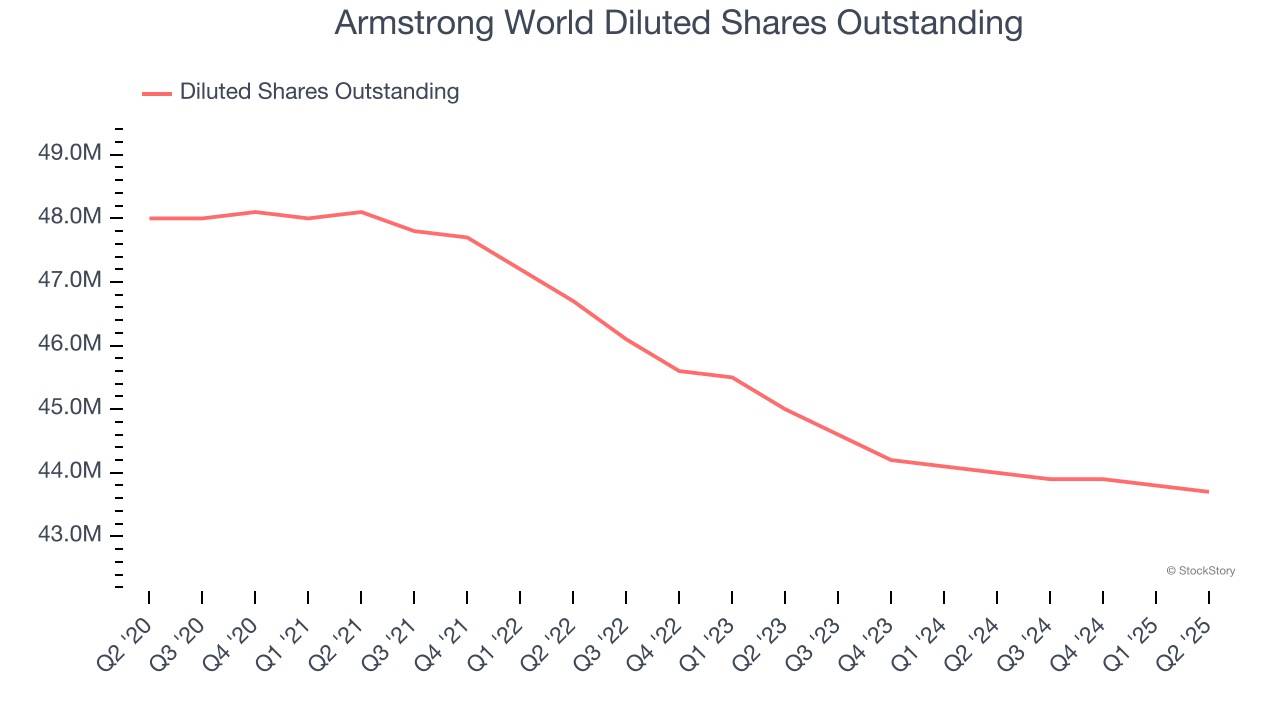
Ceiling and wall solutions company Armstrong World Industries (NYSE:AWI) announced better-than-expected revenue in Q2 CY2025, with sales up 16.3% year on year to $424.6 million. The company’s full-year revenue guidance of $1.62 billion at the midpoint came in 0.9% above analysts’ estimates. Its non-GAAP profit of $2.09 per share was 17.3% above analysts’ consensus estimates.
Is now the time to buy Armstrong World? Find out by accessing our full research report, it’s free.
Armstrong World (AWI) Q2 CY2025 Highlights:
- Revenue: $424.6 million vs analyst estimates of $403.6 million (16.3% year-on-year growth, 5.2% beat)
- Adjusted EPS: $2.09 vs analyst estimates of $1.78 (17.3% beat)
- Adjusted EBITDA: $154 million vs analyst estimates of $138.4 million (36.3% margin, 11.3% beat)
- The company lifted its revenue guidance for the full year to $1.62 billion at the midpoint from $1.59 billion, a 1.6% increase
- Management raised its full-year Adjusted EPS guidance to $7.23 at the midpoint, a 3.2% increase
- EBITDA guidance for the full year is $552.5 million at the midpoint, above analyst estimates of $539.8 million
- Operating Margin: 29%, up from 26% in the same quarter last year
- Free Cash Flow Margin: 20.7%, up from 17% in the same quarter last year
- Market Capitalization: $7.33 billion
“With strong performance across our enterprise, we delivered robust top and bottom-line growth with margin expansion in both our Mineral Fiber and Architectural Specialties segments,” said AWI President and CEO, Vic Grizzle.
Company Overview
Started as a two-man shop dating back to the 1860s, Armstrong (NYSE:AWI) provides ceiling and wall products to commercial and residential spaces.
Revenue Growth
Examining a company’s long-term performance can provide clues about its quality. Any business can experience short-term success, but top-performing ones enjoy sustained growth for years. Luckily, Armstrong World’s sales grew at a solid 9.9% compounded annual growth rate over the last five years. Its growth beat the average industrials company and shows its offerings resonate with customers, a helpful starting point for our analysis.

Long-term growth is the most important, but within industrials, a half-decade historical view may miss new industry trends or demand cycles. Armstrong World’s annualized revenue growth of 11.1% over the last two years is above its five-year trend, suggesting its demand was strong and recently accelerated. 
This quarter, Armstrong World reported year-on-year revenue growth of 16.3%, and its $424.6 million of revenue exceeded Wall Street’s estimates by 5.2%.
Looking ahead, sell-side analysts expect revenue to grow 5.2% over the next 12 months, a deceleration versus the last two years. This projection doesn't excite us and indicates its products and services will see some demand headwinds. At least the company is tracking well in other measures of financial health.
Software is eating the world and there is virtually no industry left that has been untouched by it. That drives increasing demand for tools helping software developers do their jobs, whether it be monitoring critical cloud infrastructure, integrating audio and video functionality, or ensuring smooth content streaming. Click here to access a free report on our 3 favorite stocks to play this generational megatrend.
Operating Margin
Armstrong World has been a well-oiled machine over the last five years. It demonstrated elite profitability for an industrials business, boasting an average operating margin of 24.7%. This result isn’t surprising as its high gross margin gives it a favorable starting point.
Analyzing the trend in its profitability, Armstrong World’s operating margin rose by 2.1 percentage points over the last five years, as its sales growth gave it operating leverage.

This quarter, Armstrong World generated an operating margin profit margin of 29%, up 3 percentage points year on year. The increase was encouraging, and because its operating margin rose more than its gross margin, we can infer it was more efficient with expenses such as marketing, R&D, and administrative overhead.
Earnings Per Share
Revenue trends explain a company’s historical growth, but the long-term change in earnings per share (EPS) points to the profitability of that growth – for example, a company could inflate its sales through excessive spending on advertising and promotions.
Armstrong World’s solid 10.2% annual EPS growth over the last five years aligns with its revenue performance. This tells us its incremental sales were profitable.

Like with revenue, we analyze EPS over a more recent period because it can provide insight into an emerging theme or development for the business.
Armstrong World’s two-year annual EPS growth of 19.5% was fantastic and topped its 11.1% two-year revenue growth.
We can take a deeper look into Armstrong World’s earnings quality to better understand the drivers of its performance. Armstrong World’s operating margin has expanded by 2.3 percentage points over the last two yearswhile its share count has shrunk 2.9%. These are positive signs for shareholders because improving profitability and share buybacks turbocharge EPS growth relative to revenue growth. 
In Q2, Armstrong World reported EPS at $2.09, up from $1.62 in the same quarter last year. This print easily cleared analysts’ estimates, and shareholders should be content with the results. Over the next 12 months, Wall Street expects Armstrong World’s full-year EPS of $7.06 to grow 5%.
Key Takeaways from Armstrong World’s Q2 Results
This was a 'beat and raise' quarter. Specifically, we were impressed that Armstrong World beat analysts’ revenue EBITDA expectations this quarter. We were also excited its full-year guidance was lifted. Zooming out, we think this was a solid print. The stock traded up 3.6% to $175 immediately after reporting.
Armstrong World had an encouraging quarter, but one earnings result doesn’t necessarily make the stock a buy. Let’s see if this is a good investment. The latest quarter does matter, but not nearly as much as longer-term fundamentals and valuation, when deciding if the stock is a buy. We cover that in our actionable full research report which you can read here, it’s free.
